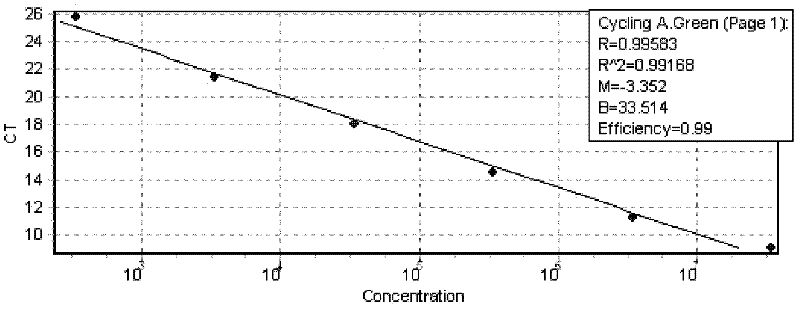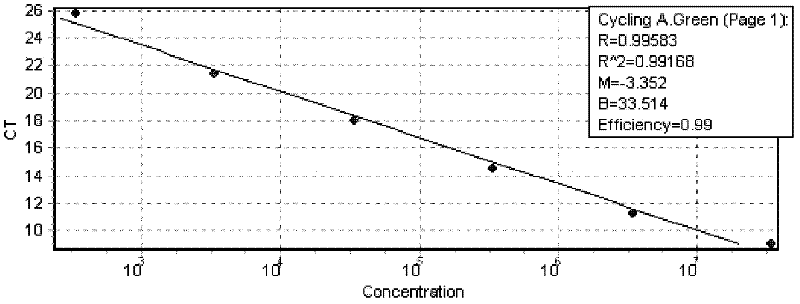Method for quantifying ammonia oxidizing archaea in lacustrine deposit
A technology for ammonia oxidizing archaea and sediments, applied in biochemical equipment and methods, microbial measurement/inspection, fluorescence/phosphorescence, etc., can solve the problem of long cycle, large error, inability to accurately reflect the number of ammonia oxidizing archaea, etc. problems to achieve the effect of accurate research methods
- Summary
- Abstract
- Description
- Claims
- Application Information
AI Technical Summary
Problems solved by technology
Method used
Image
Examples
Embodiment Construction
[0020] For making the purpose of the present invention, technical scheme and advantage clearer, the present invention is further described as an example with the quantitative research of ammonia-oxidizing archaea in Taihu Lake sediment below:
[0021] This method for the quantitative study of ammonia-oxidizing archaea in sediments involves the following steps:
[0022] (1) Extraction of DNA
[0023] Lake sediment samples were collected and freeze-dried. Weigh 5 g of the lyophilized sediment sample into a 50 mL centrifuge tube, add 9 mL of sterile water, 2 mL of Tris-HCl buffer, 2.5 mL of EDTA solution and 5 mL of 10% SDS solution. After mixing, place in a water bath at 65°C for 60 min. Centrifuge at 12000 rpm for 10 min at room temperature. The supernatant was collected in a 50 mL centrifuge tube, 3 mL of 5M NaCl, 2 mL of 10% CTAB solution and 10 mL of proteinase K were added, mixed slightly, and incubated in a water bath at 65°C for 20 min. Add 16 mL of chloroform:isoamyl...
PUM
 Login to View More
Login to View More Abstract
Description
Claims
Application Information
 Login to View More
Login to View More - R&D
- Intellectual Property
- Life Sciences
- Materials
- Tech Scout
- Unparalleled Data Quality
- Higher Quality Content
- 60% Fewer Hallucinations
Browse by: Latest US Patents, China's latest patents, Technical Efficacy Thesaurus, Application Domain, Technology Topic, Popular Technical Reports.
© 2025 PatSnap. All rights reserved.Legal|Privacy policy|Modern Slavery Act Transparency Statement|Sitemap|About US| Contact US: help@patsnap.com



